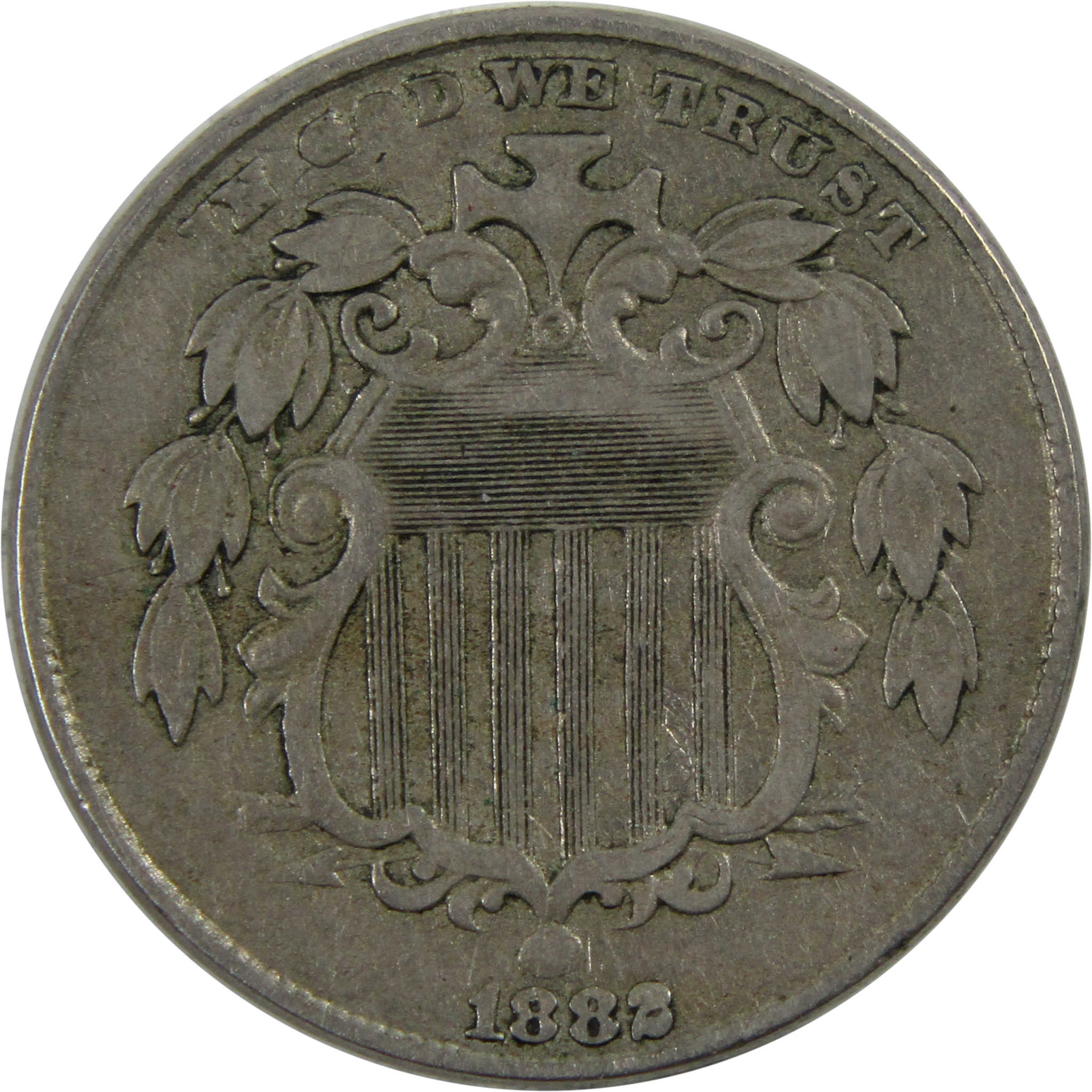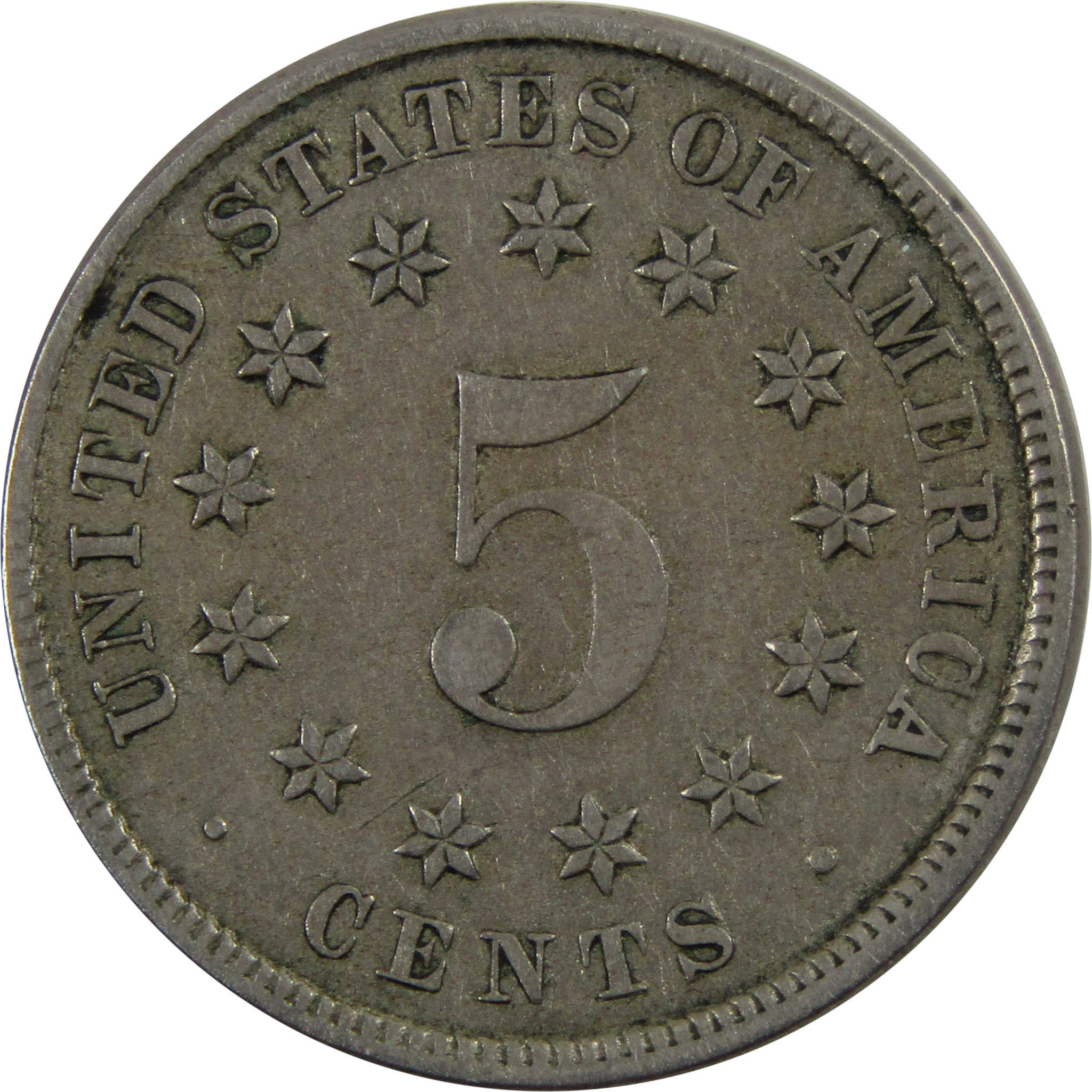All Products
- Home
- Two Cents
- Twenty Cents
- Colonial Coins
- Error Coins
-
- Ascension Island Coins
- Australian Coins
- Barbados Coins
- Cameroon Coins
- Canadian Coins
- Cook Islands Coins
- Fiji Coins
- Hawaiian Coins
- Mexican / Spanish Coins
- Niue Coins
- Palau Coins
- Republic of Chad Coins
- Samoa Coins
- Solomon Islands Coins
- Tokelau Coins
- Tuvalu Coins
- UK / Great Britain Commemoratives
- Other Foreign Coins
- Paper Money
- Novelties
- Browse All Products
Shield Nickel (1866-1883)
30 products
Showing 25 - 30 of 30 products
In 1866, the U.S. Mint began issuing new five-cent coins struck in nickel as a replacement for silver half dimes. With an obverse design similar to that on bronze two-cent pieces of 1864-1873, these new “shield nickels” quickly caught on. The original reverse featured a large numeral “5” within a circle of 13 stars and 13 rays. However, the rays were removed in 1867. All 1877-1878 coins were Proof issues. Learn More












Shield Nickel (1866-1883): A Brief History
The Shield Nickel is a five-cent coin that was minted by the United States Mint from 1866 to 1883. Here's a brief history of the Shield Nickel:
1. Background and Motivation:
In the mid-19th century, the U.S. Mint faced challenges with the coinage of the silver half dime due to rising silver prices. Mint officials sought an alternative to alleviate this issue and proposed the creation of a new copper-nickel five-cent coin.
2. Design and Symbolism:
The Shield Nickel, designed by Chief Engraver James B. Longacre, featured an innovative design on the obverse (front) side. It displayed a large central shield, giving the coin its name. The shield was surrounded by rays and stars, and the motto "In God We Trust" appeared prominently. The reverse (back) side featured a large numeral "5" surrounded by stars.
3. Introduction and Controversy:
The Shield Nickel was introduced in 1866. However, the design faced criticism due to its intricate details, which made the coins challenging to produce. The initial design included rays between the stars on the obverse, but these were quickly eliminated due to striking difficulties.
4. Nickel Composition:
The Shield Nickel was the first U.S. five-cent coin to be made of a copper-nickel alloy. This composition, consisting of 75% copper and 25% nickel, gave the coin a distinctive appearance and helped distinguish it from silver coins.
5. Production Challenges:
The Shield Nickel experienced production challenges, including difficulties in obtaining a consistent strike and problems with die life. These issues led to modifications in the design, such as the removal of rays in 1867 and changes to the size of the numerals.
6. End of Production:
The Shield Nickel continued to be minted until 1883. In that year, the Liberty Head Nickel, featuring a design with the profile of Liberty, replaced it. The decision to discontinue the Shield Nickel was influenced by ongoing production challenges and the desire for a new, more straightforward design.
While the Shield Nickel had a relatively short mintage period, it played a significant role in the history of U.S. coinage as the first nickel five-cent coin and set the stage for the transition to the Liberty Head Nickel and subsequent designs.
